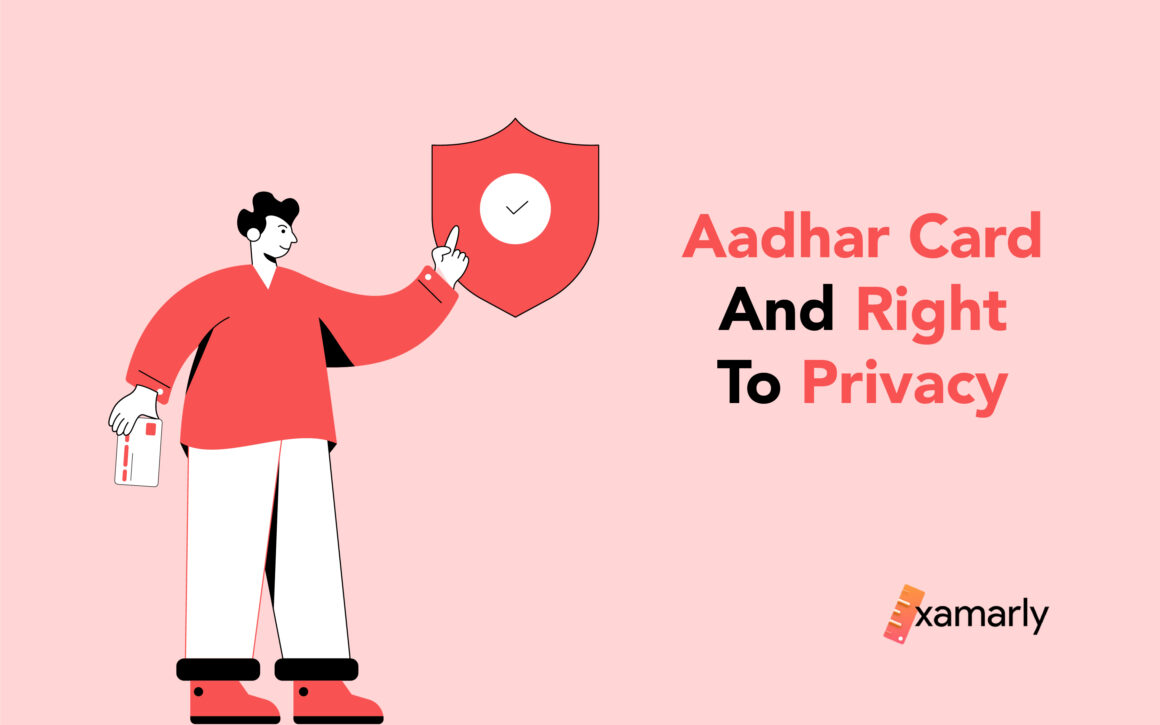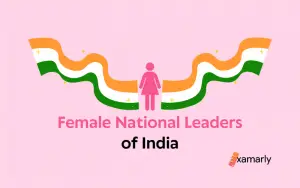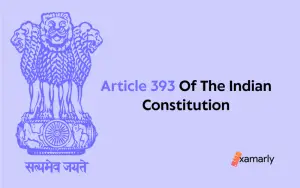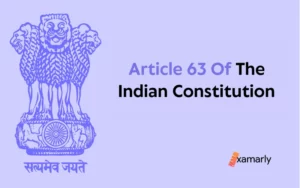Aadhaar is a random 12-digit number. That is given to Indian citizens who have completed the Authority’s authentication process by the UIDAI (“Authority”). The Aadhaar Act gives residents the right to get an Aadhaar number by enrolling in the program and providing specific biometric and demographic data.
We will go into great detail about Aadhar Card and Right to Privacy in this article. It is a crucial subject for individuals preparing for the next IAS Exam. Additionally, there may be questions based on it in the final Civil Services examination.
- Is Obtaining An Aadhar Necessary?
- Is Aadhar A Form Of Identification?
- Can Aadhar Replace The Current Modes Of Identification?
- Pros Of Adhaar
- Issues With Aadhar
- Privacy Concerns Affecting Aadhaar Cards
- Why Is The Right To Privacy So Crucial?
- Efforts By The Indian Government To link Aadhaar
- The Supreme Court Judgement
- Bill For Data Protection
- Conclusion Of Aadhar Card And Right To Privacy
- UPSC Civil Services Examination, Previous Year Questions (PYQs)
Is Obtaining An Aadhar Necessary?
- Age or gender is not a factor while registering to get an Aadhaar number; it is open to all Indian citizens.
- But, in some cases, the government has made Aadhaar mandatory. A few of them are:
- Linking it to bank accounts, mobile phone numbers, etc.
- For filing income tax returns and PAN applications, the government authorities have mandated that applicants must provide their Aadhaar number or Aadhaar Enrollment ID.
- For the direct payment of subsidies into individuals’ bank accounts.
Is Aadhar A Form Of Identification?
- The Aadhaar number serves as identification, but it does not grant the holder of the number any citizenship or domicile rights.
- It can be used as the basis or key identity for many government welfare systems and programs to ensure effective service delivery, hence fostering transparency and sound governance.
Can Aadhar Replace The Current Modes Of Identification?
- It is distinct and durable enough to drop duplication and false identities.
- Aadhar won’t replace the currently used identifying documents, such as PAN, licenses, passports, etc. It can be utilized as a sole form of identification, though.
- Aadhar numbers are secure and distinctive enough to weed out a lot of duplicate and false identities in both private and public records.
- Aadhaar enrollment is a one-time process for each person. Since the uniqueness is obtained through the process of demographic and biometric de-duplication, only one Aadhar must be generated after de-duplication.
Pros Of Adhaar
- One Aadhaar number for one individual – Since it is connected to a person’s biometrics, it is protected from duplication and theft and guarantees that there is only one Aadhar number for one individual.
- The use of the Aadhar card in monetary transactions can help the nation fight the problem of black money.
- Portability: Since Aadhar is a national identification number, organizations and services can use it to connect the nation’s central Unique Identification dataset from any location and use its identification services to confirm a beneficiary’s authenticity.
- Inclusion of people who lack any kind of identification at the moment: The “Introducer” system, which has been certified for information validation for the UIDAI, will help citizens who are poor and underprivileged establish their identities because they lack the identifying credentials required to access State benefits.
- JAM trinity – Jan DhanYojana, Aadhaar, and Mobile numbers – the state is able to provide this help to low-income families in a concentrated and less distorted manner.
- It is not necessary to gather many identification documents or search everywhere for paperwork. Your simple Aadhar card serves as adequate identification and addresses documentation.
Issues With Aadhar
- Violation of rights-People’s right to privacy was allegedly violated by the UIDAI. This was accomplished by giving other government organizations access to their biometric information. The validity of Aadhaar from the aspect of privacy as a Fundamental Right will shortly be tested. The Supreme Court’s five-judge bench will handle this.
- The duration of keeping authenticating records- The largest amount of time that the UID authority may keep authentication records on file is not stated in the bill.
- Exclusion: Labourers and the underprivileged, sometimes lack distinct fingerprints. This is because of heavy mental labour. Even elderly individuals with “dry hands” have encountered challenges. Cataract patients’ weak iris scans have also caused issues.
- Uncertain Legal Support: A money bill serves as the present Aadhar’s legal justification. The Aadhaar (Targeted Delivery of Financial and Other Subsidies, Benefits, and Services) Act, 2016 went into effect. Yet, the Supreme Court is currently reviewing this act.
- Consent: Lack of informed consent on purposes for which the data will be used.
- Profiling of Citizen: Act does not forbid law enforcement and intelligence organizations from using the Aadhaar number as a link (key) across different datasets to identify patterns of activity.
- Exit Option: The lack of a method to leave the UIDAI database.
- The versatility of UIDAI: The Act grants the UID authority specific authorization for the gathering of biometric data. This ability will enable the authority to gather more personal details. Even without first receiving consent from Parliament. The courts cannot take notice of any offense criminal under the Aadhaar Act. Unless a complaint is filed by the UID authority. Also, UID has exclusive jurisdiction to file complaints.
Privacy Concerns Affecting Aadhaar Cards
- Identity theft – Aadhaar may be vulnerable to identity fraud and unlawful biometric collection. This poses a threat to the concerned people’s right to privacy.
- The privacy judgment on Aadhaar will most immediately end the legal gridlock. This will be a major benefit. Hopefully, the court proceedings about the legality of the government’s identification scheme will also proceed.
- Concerns have been raised about the unlawful usage of biometrics to identify individuals in the wrong way. Aadhaar database, facial pictures, fingerprint scans, iris recognition, and demographic information may be matched by elements with malicious intent to identify persons.
Why Is The Right To Privacy So Crucial?
Privacy protection and repute are essential components of the dignity that each person has by being a human being.
The maintenance of the “private domain” is essential for maintaining the freedom to make sections of society independently and without external social pressure. This includes the right to vote and the freedom of religion. When the expectation of privacy is not sufficiently protected, the human right to individual liberty is insignificant.
Modern technology: The development of contemporary technological tools has facilitated the violation of privacy.
Additionally, many government programs and initiatives involve computerized data gathered from individuals that are susceptible to theft and abuse.
Efforts By The Indian Government To link Aadhaar
- Jan Dhan Yojana- Aadhaar card/number is the sole valid document recognized by Jan Dhan Yojana (PMJDY) for opening a bank account. But, you can open a PMJDY account after submitting more paperwork. RuPay card, free zero balance savings account, and life and accident insurance are a few of the perks that are available.
- Obtaining a Passport and renewing It: With your Aadhar card, you can get a passport in as few as 10 days. You only need to apply online and supply your Aadhar details for proof of identity and residency verification. You will receive the appointment in 3 days and the passport in 7 days.
- Direct Benefit Transfer (LPG Subsidy) based on Aadhaar: The Act aims at efficient and targeted delivery of subsidies. The LPG subsidy amount is sent straight into the bank account using the 12-digit individual identification number on the Aadhar card. This DBTL system is known as PAHAL. You must visit the distributor in your area to link your Aadhar number to your 17-digit LPG consumer number to receive this benefit. Even so, you can now link a bank account to your LPG number to get direct benefit transfers.
- BHIM- Aadhaar Platform: The BHIM App features a new feature called the BHIM-Aadhar platform, which allows users to make digital payments using the Aadhaar platform.
- Income Tax and PAN applications: From July 1, 2017, filing of income tax returns and applying for a PAN both need a supply of an Aadhaar number or the applicant’s Aadhaar Enrollment ID.
- For the purpose of opening bank accounts and conducting financial transactions worth more than Rs 50,000, the government has made Aadhaar essential. Additionally, by December 31, 2017, the government has mandated that all individuals with active accounts link their Aadhaar numbers to their existing bank accounts.
- mAadhaar: A brand-new mobile application called “mAadhaar” has been released by India’s Unique Identification Authority (UIDAI). This was done to sync Aadhaar data with mobile devices. By using the Aadhaar profile on their mobile device, program users can quickly give identity Verification.
- Voter Card Linking: Aadhaar numbers have been linked to voter IDs as of March 9th, 2015. Getting rid of fake identities is being done. It would be impossible for a voter to own several voter ID cards once an Aadhaar number was attached.
- SEBI: The Securities and Exchange Board of India now recognizes it as acceptable identification and address documentation for stock market transactions.
- Mobile Number: Aadhaar must be linked to every active mobile subscriber’s (prepaid and postpaid) mobile number.
- Monthly Pension: To collect a monthly pension, all retirees in a few states will now need to register their Aadhaar card numbers with the appropriate government. This action was taken to prevent bogus beneficiary fraud situations.
The Supreme Court Judgement
The Aadhaar Card, a new form of identification launched by the Central Government, was introduced in 2011. The Supreme Court has ruled that the right to privacy is protected by the Constitution as a fundamental right. The Aadhaar project will be affected by this ruling in some way because the collection of all citizen biometric data may be considered a violation of the concept of privacy. Aadhaar is designed to allow the advantages to reach society’s marginalized sections. It was followed by the Supreme Court’s decision on September 26, 2018. Further consideration should be given to the dignity of people and the community as a whole.
The Aadhaar Card became necessary for many benefit programs over time. A good example of this is the Public Distribution System’s Mid-Day Meal Program, which offers free meals. Also guaranteed wage work under the Mahatma Gandhi National Rural Employment Guarantee Scheme.
The Aadhaar scheme, yet, was challenged before the Supreme Court by Justice K.S. Puttaswamy, a former Karnataka High Court judge. He said that Aadhaar violated the fundamental rights guaranteed by the Constitution.
Bill For Data Protection
The Minister of Electronic and Information Technology, Ravi Shankar Prasad, has stated that the data protection law would be in effect by December following a major ruling by the Supreme Court on the right to privacy. The new bill, according to the union minister, would be written with consideration for the most recent privacy verdict. A significant portion of the former Supreme Court judge BN Srikrishna’s input would be used in the bill’s drafting.
Conclusion Of Aadhar Card And Right To Privacy
According to a thorough analysis of the Aadhaar case, it can be concluded that the case has undergone numerous changes since it was first brought up. A number of factors, including the protection of all citizens, advancing the interests of justice, and upholding the concept of privacy, were taken into account.
Perception of people varies when it comes to interpretation of aadhar case. Additionally, it is imperative to make changes and close the gaps left by the Aadhaar case. Otherwise, a person’s right to privacy would once more be in jeopardy. Aadhaar’s effectiveness in fulfilling its original objective must also be evaluated, and if it is not, a mechanism must be put in place to ensure that it does so.
UPSC Civil Services Examination, Previous Year Questions (PYQs)
Q1. Consider the following statements: (2018)
- An aadhaar card can be used as proof of citizenship or domicile.
- Once issued, the Aadhaar number cannot be deactivated or omitted by the Issuing Authority.
Which of the statements given above is/are correct?
(a) 1 only
(b) 2 only
(c) Both 1 and 2
(d) Neither 1 nor 2
Ans: (d)






